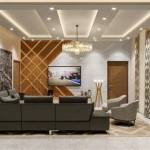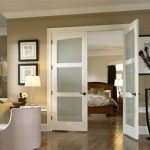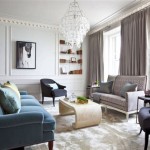Interior Design Masters: A German Perspective
Interior design is a field that continuously evolves, reflecting changes in societal tastes, technological advancements, and environmental awareness. The rise of reality television has provided a unique platform to showcase the creativity, challenges, and complexities inherent in this profession. "Interior Design Masters," a successful format originating in the UK, has captured the attention of audiences worldwide by offering a glimpse into the competitive world of interior design. While a direct German adaptation of the show, mirroring the UK format exactly, does not yet exist, the principles and concepts explored within the program resonate deeply with the German design landscape and are reflected in various design-related media and educational pursuits within the country.
The core concept of "Interior Design Masters" typically involves a group of aspiring interior designers competing in a series of design challenges. Each week, they are tasked with transforming a specific space, ranging from residential properties to commercial establishments, according to a particular brief and within a set budget and timeframe. Their work is then judged by established professionals in the field, who critique their design choices, functionality, and overall execution. The designer who fails to meet the judges' expectations is eliminated, continuing until a winner is crowned.
Although a direct translation of this format has not yet materialized for German television, the spirit of the show exists in various forms. German television often features design segments within lifestyle programs, showcasing renovation projects and offering viewers practical advice. Furthermore, the emphasis on sustainable design, functionality, and aesthetic appeal – all key elements of "Interior Design Masters" – are central to the curriculum of German design schools and universities. Design competitions, often sponsored by industry partners, also occur in Germany, providing aspiring designers with a platform to showcase their talents and gain recognition.
The German design philosophy, while aligning with universal principles of good design, also possesses its own distinct characteristics. A strong emphasis on functionality, durability, and clean lines is often observed. This is rooted in the historical influence of movements such as Bauhaus, which prioritized simplicity, practicality, and the integration of art and technology. Contemporary German design retains these principles, while also embracing innovation and sustainability.
The Importance of Functionality and Ergonomics
One of the defining aspects of German design is its commitment to functionality. This goes beyond simply making a space look aesthetically pleasing; it necessitates that the design serves a practical purpose and enhances the user's experience. Ergonomics plays a crucial role in this aspect, ensuring that furniture and layouts are designed to support the human body and promote well-being. This emphasis on functionality is not merely a matter of style, but a fundamental principle embedded in the German design ethos.
This focus on functionality directly translates to the types of challenges seen in "Interior Design Masters," where contestants are often judged on how well their designs solve practical problems and improve the usability of a space. Whether it's creating a more efficient kitchen layout, designing a comfortable and functional home office, or optimizing the use of space in a small apartment, the ability to create designs that are both aesthetically pleasing and highly functional is paramount.
German design education often incorporates principles of universal design, which aims to create spaces that are accessible and usable by people of all ages and abilities. This focus on inclusivity ensures that design solutions are not only functional for the average user, but also cater to the needs of individuals with disabilities or mobility limitations. This is reflected in the attention to detail given to aspects such as door widths, ramp inclines, and the placement of controls and fixtures.
Sustainability and Environmental Responsibility
Another key aspect of contemporary German design is its commitment to sustainability and environmental responsibility. This encompasses a wide range of considerations, from the selection of sustainable materials to the implementation of energy-efficient design strategies. Designers are increasingly expected to consider the environmental impact of their work, from the sourcing of raw materials to the disposal of waste.
The use of renewable resources, such as wood from sustainably managed forests, is becoming increasingly prevalent. Designers are also exploring innovative materials, such as recycled plastics and bio-based composites, to reduce their reliance on fossil fuels. Furthermore, there is a growing awareness of the importance of reducing the environmental impact of construction and demolition processes, with a focus on minimizing waste and maximizing the reuse of materials.
Energy efficiency is another critical consideration in sustainable design. This involves optimizing the building's orientation to maximize natural light and minimize solar heat gain, as well as incorporating energy-efficient windows, insulation, and lighting systems. The use of smart home technology to control heating, cooling, and lighting can also contribute to significant energy savings. In the context of "Interior Design Masters," this would translate to contestants being judged on their ability to incorporate sustainable design principles into their projects, using eco-friendly materials and energy-efficient solutions.
The Role of Technology and Innovation
Technology plays a significant role in contemporary German design, both in the design process and in the finished product. Computer-aided design (CAD) software is widely used to create detailed plans and visualizations, allowing designers to experiment with different design ideas and collaborate with clients and contractors. Building Information Modeling (BIM) is also becoming increasingly popular, enabling designers to create virtual models of buildings that incorporate all aspects of the design, from structural elements to mechanical systems.
Smart home technology is also transforming the way people interact with their living spaces. Automated lighting, heating, and security systems can be controlled remotely, allowing homeowners to customize their environment and improve energy efficiency. Voice-activated assistants, such as Amazon Alexa and Google Assistant, are also becoming increasingly integrated into home design, providing hands-free control over various functions.
Innovation is also driving the development of new materials and construction techniques. 3D printing is being used to create custom furniture and architectural elements, while modular construction is offering a faster and more efficient way to build homes and commercial buildings. These technological advancements are opening up new possibilities for designers to create innovative and sustainable spaces. While "Interior Design Masters" may not directly showcase these advanced technologies in every challenge, the underlying principles of innovation and problem-solving are essential qualities that the show seeks to identify in its contestants.
Although a German version of "Interior Design Masters" may not currently exist, the core principles of the show – creativity, functionality, sustainability, and innovation – are deeply embedded in the German design landscape. The emphasis on these principles is evident in design education, industry practices, and the overall design philosophy that shapes the built environment in Germany. The absence of a direct adaptation of the show does not diminish the relevance of its concepts within the German context. Instead, the spirit of the show lives on through various forms of media coverage, design competitions, and the ongoing pursuit of excellence in the field of interior design.

Interior Design Courses In Germany A Guide Leverage Edu

Master S Degree Ma Interior Design Berlin International University Of Applied Sciences

Masters In Interior Design Germany A Guide

Interior Design Course In Germany

10 Famous Interior Designers In Germany You Must Know

Masters In Design Germany Fees Requirements And Job Outcomes

The Best Interior Designers In Germany Part Ii

Looking To Master Interior Design In Leipzig Germany Where Can You Learn The Ropes Home Institute Paris

Art Design Study Programmes Discover Our Courses
25 Best Interior Designers In Europe Part Iii Germany Inspirations Essential Home
Related Posts








